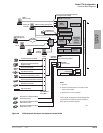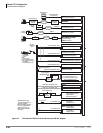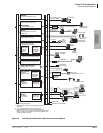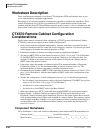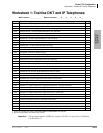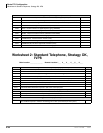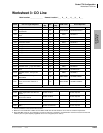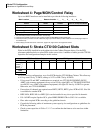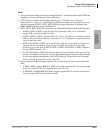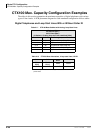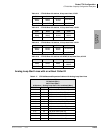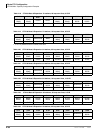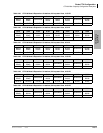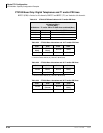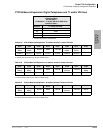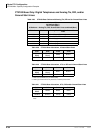
Strata CTX
Configuration
Strata CTX Configuration
Worksheet 5: Strata CTX100 Cabinet Slots
Strata CTX I&M 06/04 2-27
Notes
1. Always check the cabinet power factors using Worksheet 7 to make sure the installed PCBs and
telephones do not exceed the power factor limitations.
2. ACTU processor optional subassembly functions (see “CTX100 Processor Optional
Subassemblies” on page 2-3). Any PCB plus its PCB subassembly can be installed in any slot
with the exception of RDTU, BPTU, RPTU PCBs that support more than 16 channels, and
BDKU/BDKS PCBs that support Speaker OCA.
3. RDTU, BPTU, RPTU PCBs can be placed in any odd numbered slot using the following rules:
• If RDTU, BPTU or RPTU is placed in Slot 103 (preferred) with 8, 16 or 24 channels,
another PCB can still be installed in S104.
• If RDTU, BPTU or RPTU is placed in Slots 101, 105, or 107 with 8 or 16 channels, another
PCB can still be installed in the next slot; however, if 17~24 channels are required the next
even slot must be vacant.
• RDTU and/or BPTU or RPTU can be placed in any odd slot. If more than 16 channels are
required, the next slot must be vacant, except if the PCB is placed in slot 103, which
provides up to 32 time slots for RDTU, BPTU, or RPTU. Max. BPTU or RDTU channels =
64; max. RPTU channels = 48.
• If only 16 B channels of PRI are needed, another card can be installed in the next slot. The
position of D-channels can still be set to the 24th channel because the data of the D-channel
is passed through the data highway, not the PCM highway. The position of the D-channel
doesn’t affect the installation of cards in the CTX.
4. Digital telephone PCBs that support Speaker OCA can be placed in slots using the following
rules:
• If ADKU, BDKU (without BDKS) or PDKU must support Speaker OCA, it can be installed
in any slot; another PCB can be installed in the next even slot.
• If a BWDKU or BDKU/BDKS PCB must support Speaker OCA it can only be installed in
Slot 103; another PCB can be installed in S104.



